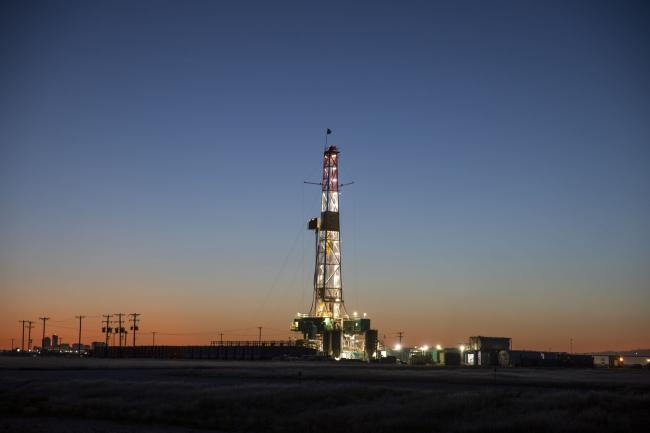(Bloomberg) -- Early signs of a shale rebound are becoming evident as crude prices emerge from their dramatic collapse earlier this year.
EOG Resources Inc (NYSE:EOG)., America’s largest shale-focused producer, plans to “accelerate” output in the second half after shutting in about a quarter of its crude in May, exploration chief Ken Boedeker told an RBC Capital Markets conference Tuesday. Permian producer Parsley Energy (NYSE:PE) Inc. is also turning wells back on just weeks after closing the taps, and producers in the Bakken formation in North Dakota are also easing the rate of shut-ins.
After the breakup in the OPEC+ alliance in March and a plunge in demand because of virus-related lockdowns, which pushed the price of West Texas Intermediate to minus $40 a barrel on April 20, oil has been on a steady march upward during the past month. While the U.S. benchmark price is still about 40% below its high point in January, it has jumped to more than $35, above the operating costs of some shale wells that had been closed to save cash. Futures were up 2.3% at $36.24 at 11:50 a.m. in New York.
EOG’s strategy “is to really accelerate our production into what we see as a price recovery in the second half of the year,” Boedeker said. The company, which began shutting wells in March and took 125,000 barrels a day off the market in May, recently reduced its hedge position, eliminating some protection against lower prices in a sign of confidence the price recovery will take hold.
Parsley will restore the “vast majority” of the 26,000 barrels of daily output it turned off last month, it said in a slide deck for an investor presentation.” Meanwhile, shut-ins in the Bakken totaled 475,000 barrels a day as of May 28, about 7% less than a fortnight earlier.
The number of frack crews working in shale fields is believed to have now bottomed at about 80 fleets, with “noticeably higher” completion work in the next three to six months, Daniel Cruise, founder of industry data provider Coras Research LLC, said last week in a report.
Based on current budget tweaks announced by explorers, as many as 50 frack crews could still be added by the end of the year, with that number doubling if oil prices move closer to $40 a barrel, according to Coras.
Still, the big question is whether bringing this production back on will be enough to offset the lack of new drilling, which is essential to mitigate the industry’s dramatic decline rates. The estimated $7 billion in explorers’ spending for the second quarter is expected to be down roughly 60% compared to the first three months of the year, according to Coras.
The number of drilling rigs carving new wells in the U.S. has dropped to the lowest in more than a decade.
READ: Oil’s Sudden Rebound Is Exposing the Achilles’ Heel of Shale
“We are not putting new capital to work,” Parsley Chief Executive Officer Matt Gallagher said by email. “Our drilling and frac operations remain suspended as we evaluate market fundamentals.”
©2020 Bloomberg L.P.

